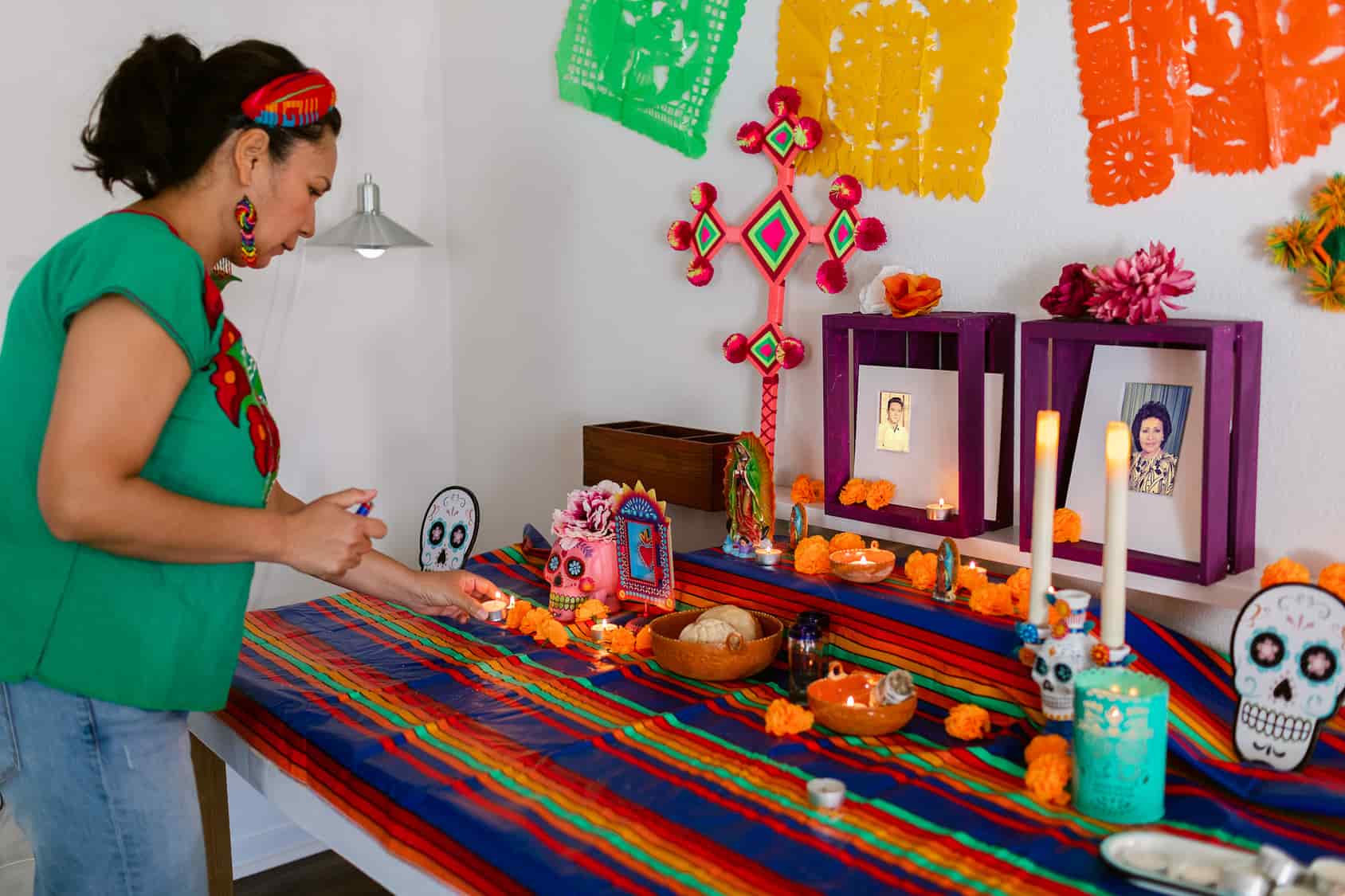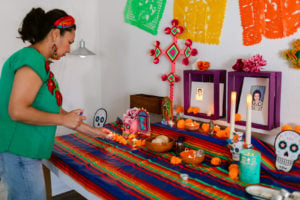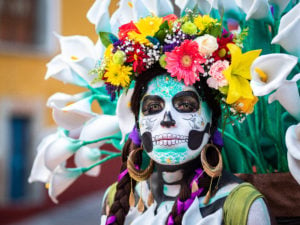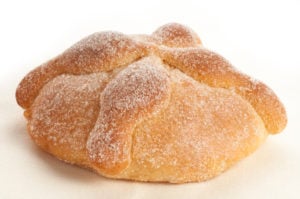Día de los Muertos: A Colorful Celebration of Life and Death

¡Bienvenidos, amigos y amigas! Today, we are embarking on a fascinating journey into the heart of Mexican culture and tradition. Our destination? Día de los Muertos, or the Day of the Dead, a vibrant celebration that honors the lives of departed loved ones. In this blog post, we’ll explore the rich history and customs associated with this holiday. We will then go over some essential vocabulary and phrases.
An Overview of the Day of The Dead
Since 2003, Dia de los Muertos been officially recognized by UNESCO as a living expression of culture as an “Intangible Cultural Heritage of Humanity.” Celebrated from October 31st to November 2nd, is a joyful commemoration of deceased friends and family members. This celebration has its roots in the Aztec culture and was later influenced by the catholic religion after the Spanish arrival in the 16th century.
Contrary to what you might expect, it’s a festive event filled with lively parades, colorful altars, and delicious food. The belief is that, during this time, the spirits of the departed return to the world of the living to enjoy their favorite earthly delights.
Ofrendas and Altars:
At the heart of Día de los Muertos are the ofrendas (offerings) and altares (altars) created by families to honor their loved ones. These altars are adorned with cempasúchil (marigold) flowers, velas (candles), calaveras de azúcar (sugar skulls), and photographs of the departed. The ofrendas often also include the deceased’s favorite foods, beverages, and symbols of hobbies they enjoyed during their lives.

Calacas and Catrinas:
Another iconic aspect of this celebration is the presence of calacas and catrinas. Calacas are skeletal figures dressed in elegant attire, often portrayed as enjoying life to the fullest. La Catrina is based on the Aztec goddess of death, Mictecacíhuatl, and was modernized in 1910 by José Guadalupe Posada. Today she is an iconic symbol of the holiday.

Pan de Muerto:
During Día de los Muertos, you can savor the delicious Pan de Muerto, a sweet bread decorated with bone-shaped pieces of dough and dusted with sugar. It’s a scrumptious treat enjoyed by families as they gather to remember their loved ones.

La Ofrenda de Flores: On the first day of the celebration, families visit cemeteries to clean and decorate the graves of their ancestors. They bring bouquets of cempasúchil flowers, which are believed to guide the spirits back to the world of the living.
Is the Day of the Dead the equivalent of Halloween?
Although both holidays may be characterized as “eerie,” Halloween centers on dark symbols such as bats, witches and vampires. In the US, it’s a holiday celebrated by children and involves sugary treats and costumes. Conversely, the Day of the Dead is specifically dedicated to the afterlife and the act of honoring and recalling the departed. The skulls serve as a symbol for the perpetuation of memories and existence. This period is held in reverence by families who seek to find peace and solace in the ritual associated with it.
Spruce Up Your Language Skills
Traditional Sayings and Expressions: As you delve into the world of Día de los Muertos, here are some essential Spanish words and expressions to enhance your language skills:
- Ofrenda – Offering
- Altar – Altar
- Cempasúchil – Marigolds
- Calaveras de azúcar – Sugar skulls
- Catrina – Symbol of Dia de los Muertos and a reminder to enjoy life, but also embrace death
- Pan de Muerto – Bread of the Dead
- La Ofrenda de Flores – The Flower Offering
- El Día de los Difuntos – The Day of the Deceased
- Calavera – Skull
- Vida y Muerte – Life and Death
- El Más Allá – The Beyond
- Familia – Family
- Tradición – Tradition
- El Recuerdo – The Memory
Questions for Conversation:
Before you start a conversation on this topic, keep in mind that not every Spanish speaker celebrates the Day of the Dead. Although you will find similar traditions across Latin America, it is most widely observed in Mexico.
- ¿Celebras el Día de los Muertos?” Do you celebrate the day of the Dead?
- ¿Cómo celebrarás el Día de los Muertos este año? (How will you celebrate the Day of the Dead this year?)
- ¿Qué significado tiene Día de los Muertos para ti y tu familia? (What does Day of the Dead mean to you and your family?)
- ¿Cuáles son tus ofrendas favoritas para el altar? (What are your favorite offerings for the altar?)
- ¿Cómo te sientes cuando visitas el cementerio en esta ocasión? (How do you feel when you visit the cemetery on this occasion?)
Día de los Muertos is a captivating and meaningful celebration that brings life and death together in a unique, colorful way. By exploring its customs and vocabulary, language learners can deepen their understanding of Mexican culture and the beauty of celebrating the lives of those who have passed. At ICLS, we believe that culture is an essential component of language learning and add cultural topics to our Spanish classes.


